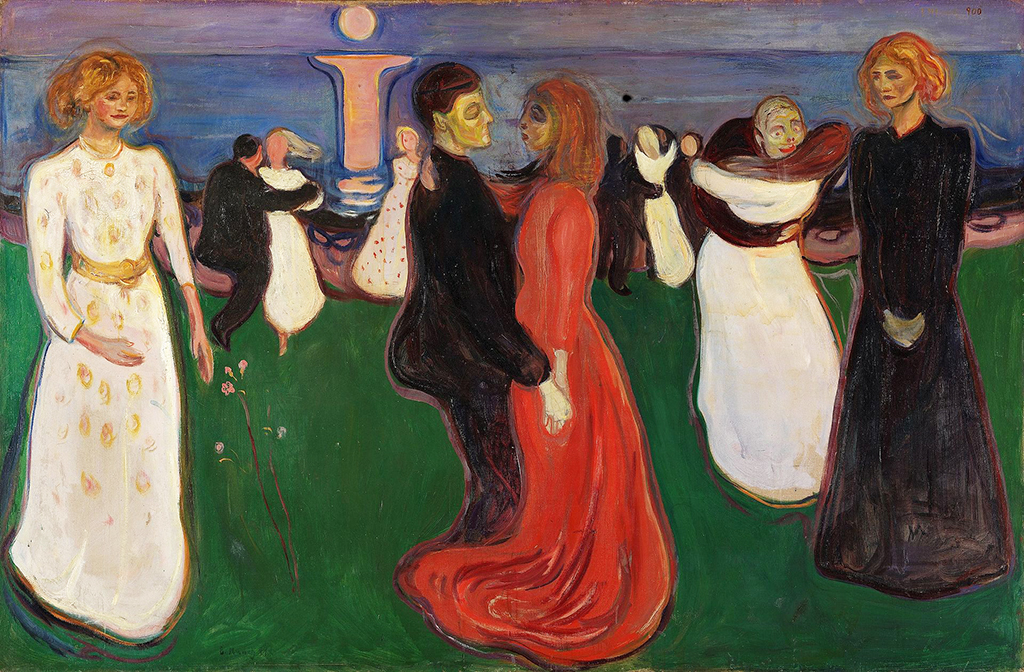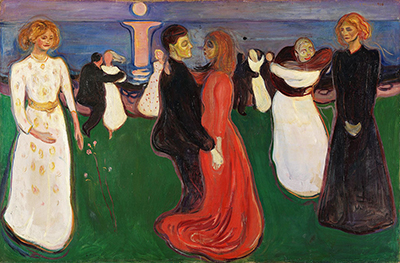Munch's painting Dance of Life of 1900 is of the shore of Aasgaardstrand in Oslo Fjord.
There's a full moon and couples dancing. Despising the concept of marriage, Dance of Life by Edvard Munch is merely a representation of one of his internal conflicts. The females in the painting depict innocence, sensuality and anguish. The three major themes of the Frieze of Life - love, anxiety and death are expressed in The Dance of Life, but the painting is interpreted from different viewpoints. The picture does, however, show the different personalities of women - perhaps revealing some of the feelings that Munch experienced with the women in his life.
Munch himself was rejected by his first love, Tulla Larsen, who was in turn later rejected by Munch. In fact, it was Munch's travels to Italy with Tulla Larsen which inspired him to create The Dance of Life in the first place. The painting was completed in 1899, and is regarded as a representation of some of the internal conflicts he battled with. Even the colours he uses in the painting have symbolic connotations, from the red dress representing sensuality and maturity to the white dress, representing innocence. It is believed Munch wanted to depict the different stages of a woman - innocence, maturity and disillusionment.
Edvard Munch later left for Paris and was influenced by impressionism artists such as Claude Monet and Edouard Manet. He split much of his time between Paris and Berlin but returned to Norway in the early 1900s. He showed an interest in painting nature and his pictures became more colourful, more cheerful. Much of his work was referred to as symbolism - art which reflects emotions rather than the objective realism and impressionism styles. Another influence was Sigmund Freud, a close contemporary, who explained how childhood experiences could influence the way an adult thought and behaved.
Edvard Munch passed away in 1944 and thousands of his paintings were donated to the government in Norway and displayed in museums and public buildings. The country built the Munch Museum of Art to commemorate his work. Edvard Munch was born in Norway in 1863. Known as an expressionist painter, the Norwegian portrayed much mental anguish in his artworks. His own father suffered from a mental illness and this influenced the way he was raised and the deeper 'messages' his paintings portrayed. His pictures were mostly somber and lonely and Munch was often compared to Vincent Van Gogh.





